
St. Saviour: The Tranquil Heart of Guernsey
Discover the serene beauty and historic charm of St. Saviour, a tranquil parish in Guernsey perfect for nature lovers and history enthusiasts alike.
Nestled in the picturesque island of Guernsey, St. Saviour is a hidden gem that offers visitors a blend of serene landscapes, historic charm, and a taste of local culture. This quaint parish is perfect for those seeking a peaceful getaway, away from the hustle and bustle of urban life. St. Saviour boasts a rich history that dates back to the early medieval period. One of its most iconic landmarks is the St. Saviour's Church, which stands as a testament to the parish's deep-rooted historical significance. The church, with its stunning architecture and tranquil surroundings, provides a perfect spot for reflection and photography. Nature lovers will find themselves enchanted by the lush greenery and scenic walking trails that St. Saviour has to offer. Saumarez Park, the largest public park in Guernsey, is located nearby and is ideal for leisurely strolls, picnics, and even a visit to the traditional Victorian walled garden. The park is a haven for both locals and tourists alike, offering a peaceful retreat amidst nature. For those interested in local culture, St. Saviour hosts several events and fairs throughout the year, where visitors can experience the warmth and hospitality of the local community. From traditional crafts to local delicacies, there is much to explore and enjoy in this charming parish.
Local tips in St. Saviour
- Visit St. Saviour's Church early in the morning to avoid crowds and enjoy peaceful surroundings.
- Pack a picnic and spend an afternoon at Saumarez Park, especially in spring when the flowers are in full bloom.
- Check local listings for community events and fairs to experience the local culture and traditions.
- Wear comfortable walking shoes as St. Saviour is best explored on foot, with many scenic trails to enjoy.
- Try the local delicacies available at small cafes and markets; they're a true taste of Guernsey.
St. Saviour: The Tranquil Heart of Guernsey
Nestled in the picturesque island of Guernsey, St. Saviour is a hidden gem that offers visitors a blend of serene landscapes, historic charm, and a taste of local culture. This quaint parish is perfect for those seeking a peaceful getaway, away from the hustle and bustle of urban life. St. Saviour boasts a rich history that dates back to the early medieval period. One of its most iconic landmarks is the St. Saviour's Church, which stands as a testament to the parish's deep-rooted historical significance. The church, with its stunning architecture and tranquil surroundings, provides a perfect spot for reflection and photography. Nature lovers will find themselves enchanted by the lush greenery and scenic walking trails that St. Saviour has to offer. Saumarez Park, the largest public park in Guernsey, is located nearby and is ideal for leisurely strolls, picnics, and even a visit to the traditional Victorian walled garden. The park is a haven for both locals and tourists alike, offering a peaceful retreat amidst nature. For those interested in local culture, St. Saviour hosts several events and fairs throughout the year, where visitors can experience the warmth and hospitality of the local community. From traditional crafts to local delicacies, there is much to explore and enjoy in this charming parish.
When is the best time to go to St. Saviour?
Iconic landmarks you can’t miss
Castle Cornet
Discover the historical wonder of Castle Cornet, Guernsey's iconic fortress and museum, with stunning views and rich maritime heritage.
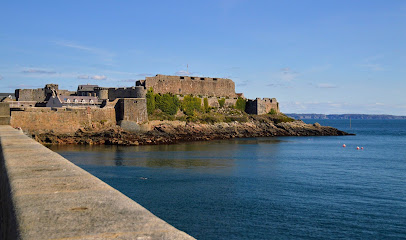
The Little Chapel
Discover the enchanting beauty of The Little Chapel, a colorful mosaic masterpiece in Guernsey that captivates and inspires every visitor.
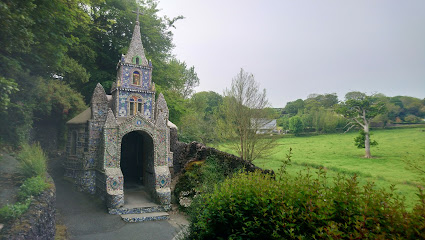
Saumarez Park
Discover the beauty and tranquility of Saumarez Park in Guernsey – a perfect escape for nature lovers and history enthusiasts alike.
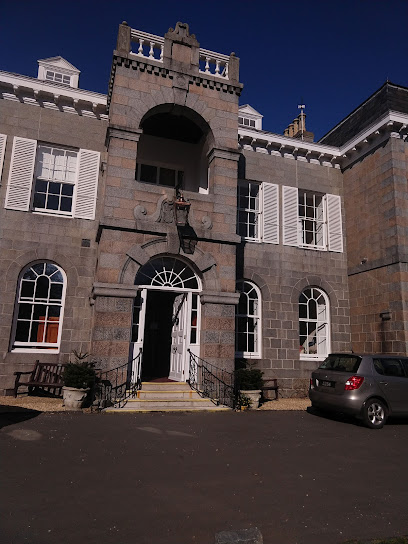
German Occupation Museum
Explore the German Occupation Museum in Guernsey, a poignant journey through World War II history showcasing the island's resilience and rich heritage.
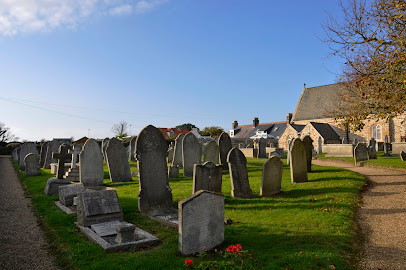
Sausmarez Manor
Explore Sausmarez Manor, a historic gem in Guernsey, showcasing beautiful gardens and rich heritage for an unforgettable experience.
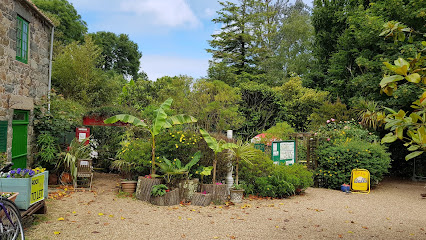
German Underground Hospital
Unearth the stories of World War II at the German Underground Hospital, a unique historical museum in Guernsey that captivates and educates.
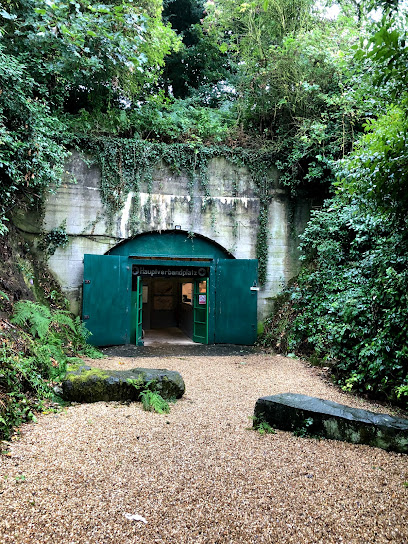
The Farmhouse
Experience the charm of The Farmhouse in Guernsey, where comfort meets elegance amidst beautiful gardens and exquisite local cuisine.

Grandes Rocques Beach
Experience the pristine beauty of Grandes Rocques Beach in Guernsey, a perfect getaway for sunbathing, swimming, and relaxing amidst stunning coastal views.
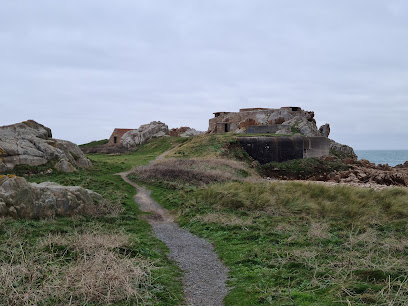
Fort Grey Shipwreck Museum
Explore the intriguing maritime history and breathtaking views at Guernsey's Fort Grey Shipwreck Museum, a unique cultural gem by the sea.
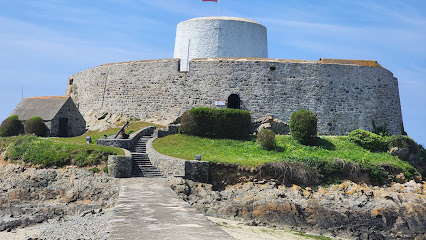
Driftwood Inn
Experience the warmth of island hospitality at Driftwood Inn, a charming hotel in picturesque Perelle Bay, Guernsey.

Fort Hommet
Discover the rich history and breathtaking views at Fort Hommet, a must-visit historical site in Guernsey perfect for history lovers and nature enthusiasts.
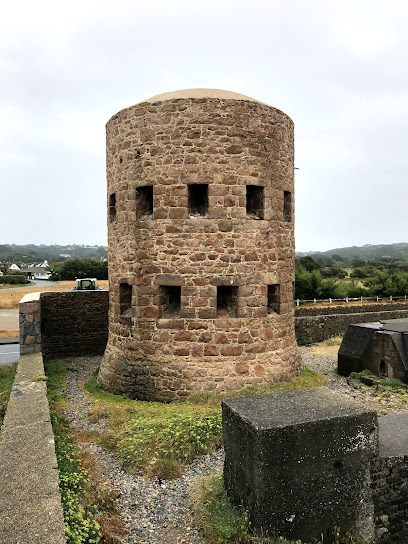
National Trust of Guernsey - Folk and Costume Museum
Explore Guernsey's vibrant heritage at the Folk and Costume Museum in Saumarez Park, where history comes alive through captivating exhibits.
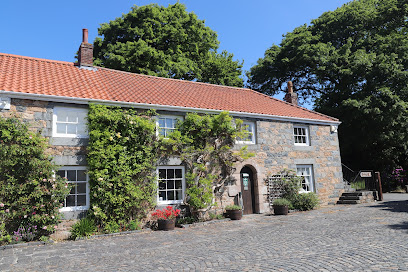
Vale Castle
Explore the historic Vale Castle in Guernsey, a stunning castle offering captivating views and a glimpse into the island's rich heritage.
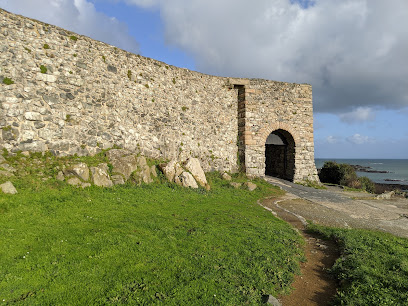
Fauxquets Valley Campsite
Experience the natural beauty and tranquility of Fauxquets Valley Campsite in Guernsey, where adventure meets relaxation amidst stunning landscapes.

Moulin Huet Bay
Explore the tranquil beauty of Moulin Huet Bay, a stunning public beach in Guernsey, perfect for relaxation and outdoor adventures.
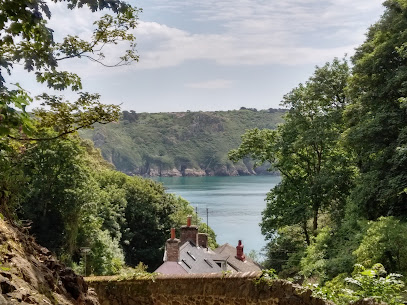
Unmissable attractions to see
Castle Cornet
Explore the rich history and breathtaking views at Castle Cornet, Guernsey's iconic fortress and museum showcasing centuries of heritage.
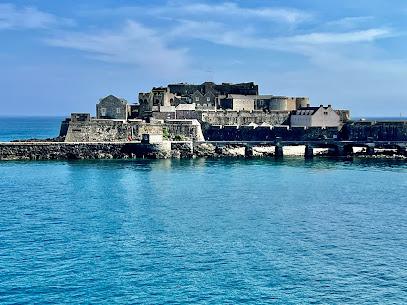
Hauteville House
Explore Hauteville House, a literary gem in Guernsey that celebrates Victor Hugo's legacy through art, history, and beautiful gardens.

German Occupation Museum
Discover the German Occupation Museum in Guernsey, an essential stop for history lovers exploring the island's World War II past and its resilient spirit.
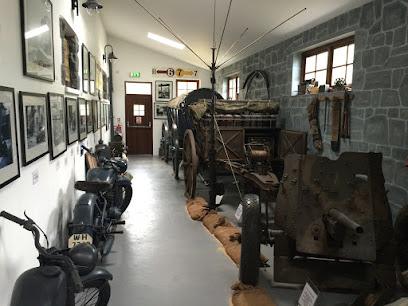
St Peter Port Harbour
Explore the vibrant St Peter Port Harbour in Guernsey, where maritime charm meets local culture in a picturesque setting.

Town Church St. Peter Port
Explore the historic St. Peter Port Town Church in Guernsey, a stunning example of Protestant architecture and a cultural gem in the heart of the town.
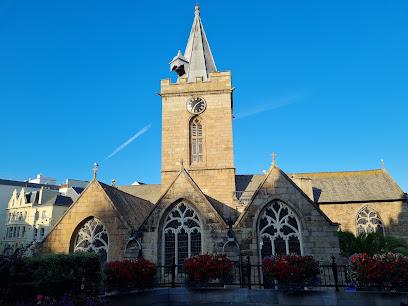
German Naval Signals HQ
Discover the rich history of Guernsey at the German Naval Signals HQ, a fascinating museum dedicated to World War II's naval communications.
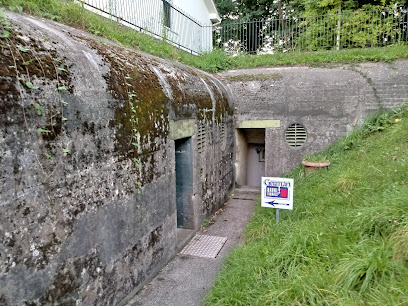
Fort Le Marchant
Explore Fort Le Marchant, Guernsey's historic fortress offering stunning coastal views and rich military heritage.
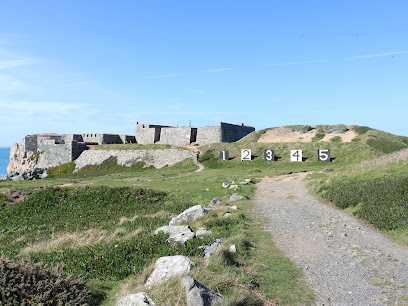
Les Fouaillages
Discover the enchanting history and natural beauty of Les Fouaillages, a hidden gem in Guernsey that offers a unique glimpse into the past.
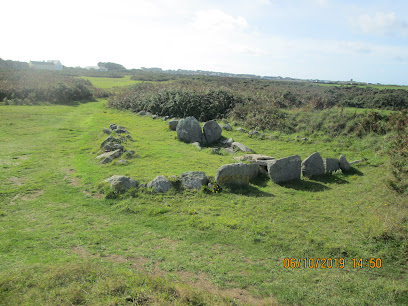
National Trust of Guernsey - Les Caches Farm
Discover the rich agricultural heritage of Guernsey at Les Caches Farm, a historical museum showcasing traditional farming practices.
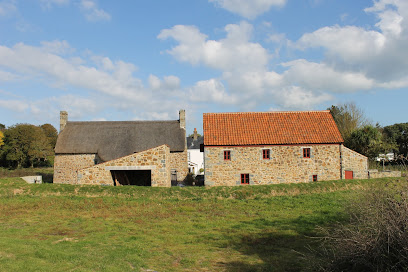
Musée du Diamant de Guernesey (Guernsey Diamant Museum)
Uncover the history and beauty of diamonds at the Guernsey Diamond Museum, a unique attraction showcasing the artistry of these precious gems in a picturesque setting.
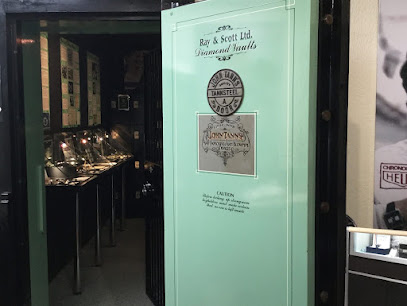
The Old Quarter
Explore the historic and vibrant atmosphere of The Old Quarter in Guernsey, a must-visit for culture and history enthusiasts.

Essential places to dine
Dix Neuf
Discover Dix Neuf in Guernsey: A vibrant brasserie offering exquisite meals and an inviting atmosphere perfect for any occasion.
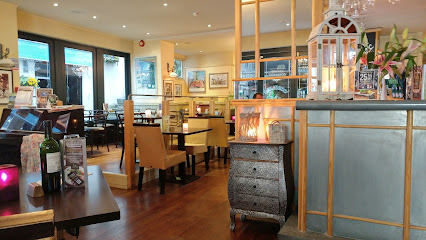
Crabby Jack's
Experience exquisite seafood dining at Crabby Jack's by Vazon Bay - where local flavors meet stunning coastal views.
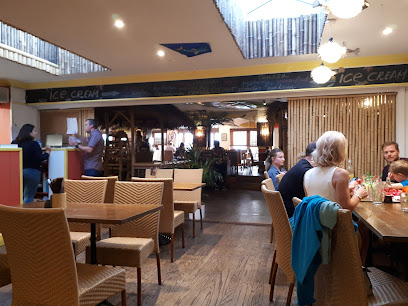
Christies Brasserie
Discover exquisite flavors at Christies Brasserie in Guernsey – where local charm meets gourmet cuisine with stunning bay views.
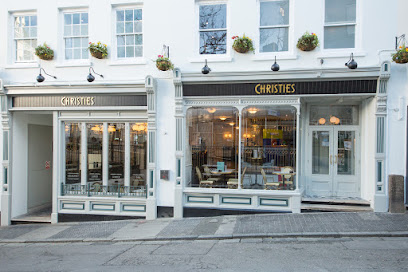
The Terrace Garden Cafe
Discover the vibrant flavors of Thailand at The Terrace Garden Cafe in Guernsey - where every meal is a delightful adventure.
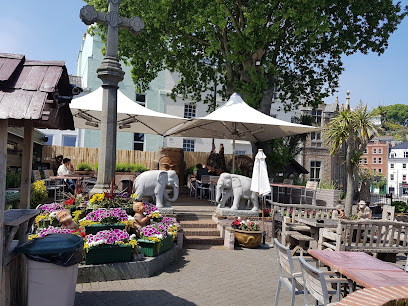
Ship & Crown
Experience exquisite British cuisine with stunning coastal views at Ship & Crown in Guernsey.
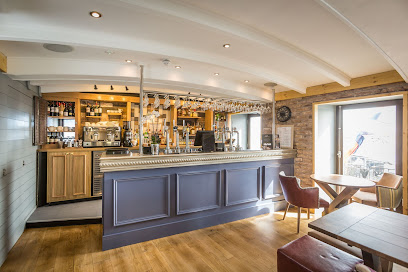
The Deerhound
Discover authentic local flavors at The Deerhound Gastropub in Le Bourg, Guernsey - where tradition meets culinary innovation.
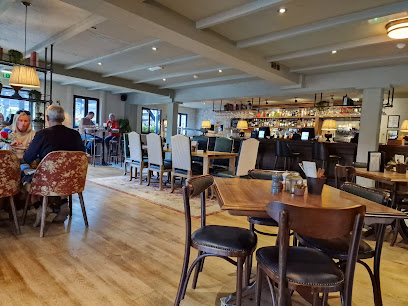
The Boathouse
Experience fresh seafood and stunning waterfront views at The Boathouse in Guernsey - a must-visit culinary destination.
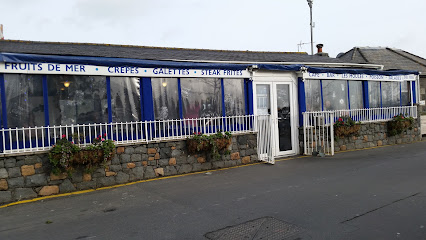
Nineteen Bar & Grill
Discover exquisite dining at Nineteen Bar & Grill in Guernsey - where taste meets tradition in every bite.
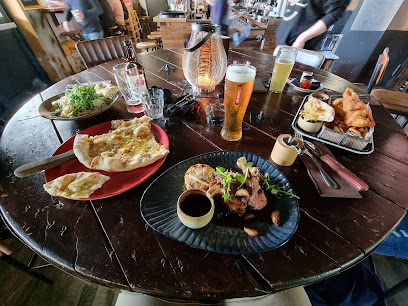
Coco
Discover Coco in Guernsey: A charming brasserie offering delightful breakfast and brunch options with stunning coastal views.
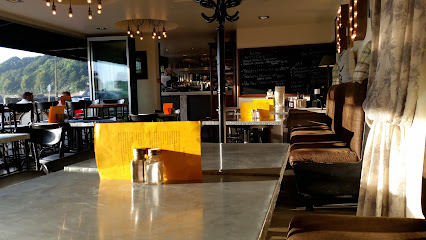
La Perla Restaurant
Experience exquisite local cuisine at La Perla Restaurant in Guernsey - where flavor meets charm in every dish.
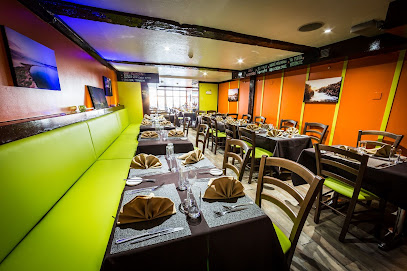
The Imperial Hotel & Restaurant
Discover breathtaking views and exquisite dining at The Imperial Hotel & Restaurant in Guernsey - where culinary excellence meets comfort.
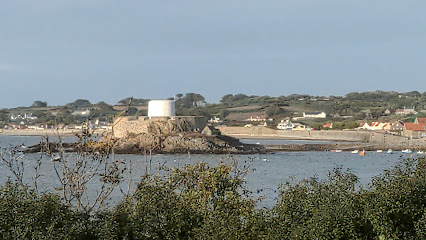
Le Nautique Restaurant
Experience exquisite seafood dining at Le Nautique Restaurant in St Peter Port – where fresh catches meet stunning harbor views.
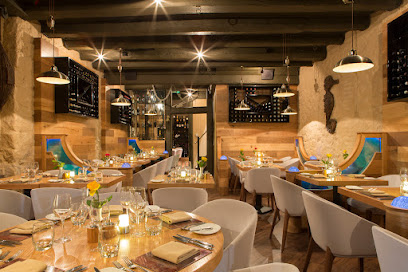
Fleur du Jardin
Discover exquisite dining at Fleur du Jardin in Castel, where local flavors meet warm hospitality in an inviting atmosphere.

The Farmhouse
Discover The Farmhouse: A charming restaurant and versatile event venue in Guernsey offering exquisite local cuisine amidst stunning surroundings.

Taste of India
Savor authentic Indian cuisine at Taste of India in Guernsey - where rich flavors meet warm hospitality.
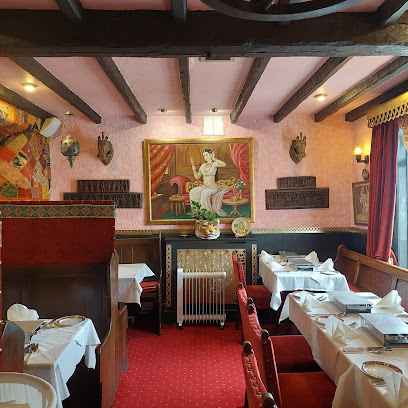
Markets, malls and hidden boutiques
Morrisons Daily
Discover convenience at Morrisons Daily in Guernsey, where quality groceries meet exceptional service for all your travel needs.
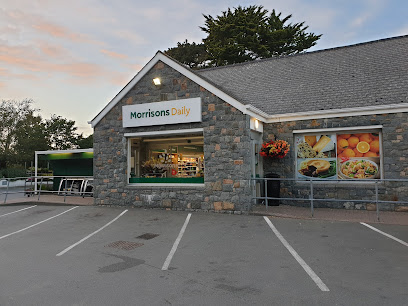
Forest Stores
Experience the local charm of Guernsey at Forest Stores, where unique groceries and friendly service await every visitor.
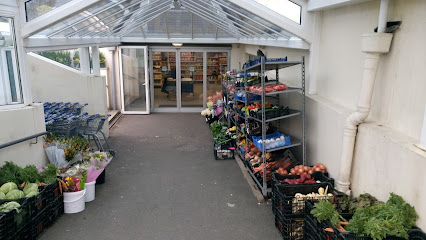
Ogiers
Discover stylish apparel and accessories at Ogiers, Guernsey's premier clothing store, where quality meets local charm.
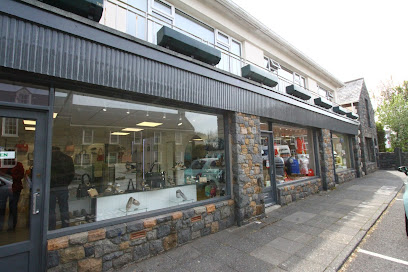
Perelle Butchery
Experience the finest local meats at Perelle Butchery in St Saviour, Guernsey, where quality and tradition come together in every bite.
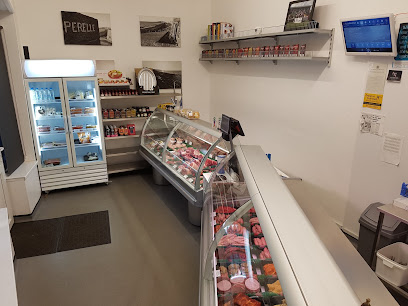
Soava Boutique
Explore the charm of Soava Boutique in Guernsey for unique gifts, exquisite handicrafts, and local flavors that capture the essence of the island.
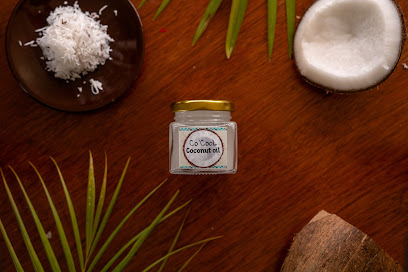
Cadeaux Guernsey Gift Shop
Explore Cadeaux Guernsey Gift Shop for unique souvenirs, local crafts, and gourmet treats that reflect the charm of the Channel Islands.
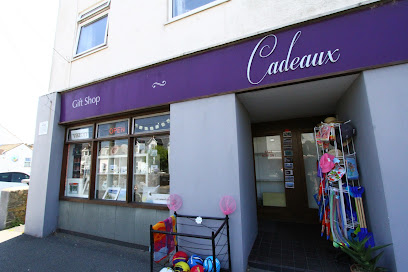
Les Bourgs Hospice Charity Shop
Explore unique second-hand treasures at Les Bourgs Hospice Charity Shop in Guernsey, supporting local hospice care with every purchase.
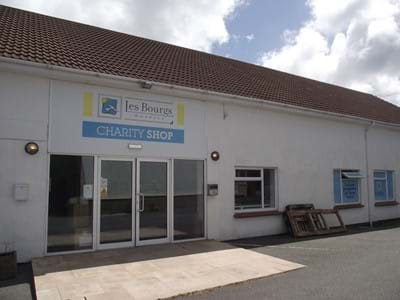
Bruce Russell and Son, Gold & Silversmiths
Explore exquisite handcrafted jewelry and silverware at Bruce Russell and Son – a gem in St Saviour, dedicated to timeless craftsmanship.

SEPHORA
Explore the beauty haven of SEPHORA in Guernsey for an unforgettable shopping experience featuring premium cosmetics and skincare products.
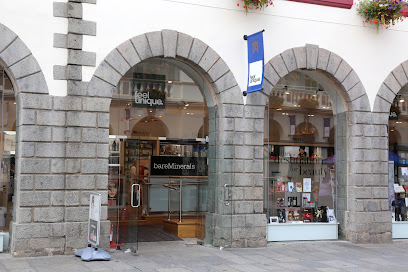
The Guernsey Shop
Discover the essence of Guernsey at The Guernsey Shop, where unique local crafts and souvenirs await every visitor.
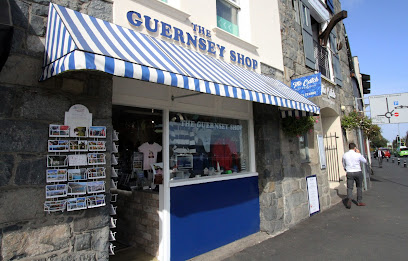
Smilers
Explore unique clothing styles at Smilers in Vazon, Guernsey, where fashion meets friendly service in a charming boutique atmosphere.
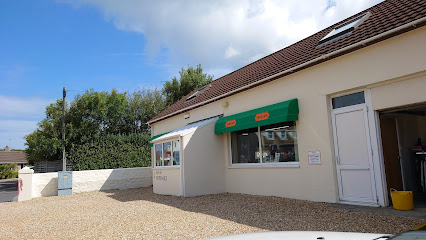
Home Comforts
Explore Home Comforts in St Martins, Guernsey: Your destination for unique gifts, candles, and home décor that embody local charm.
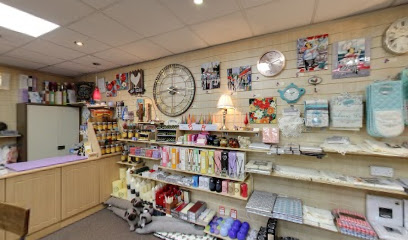
Mohair Sock Company Limited
Explore the charm of Guernsey at the Mohair Sock Company, where quality meets tradition in exquisite mohair textiles.

St Saviours Nurseries
Explore St Saviours Nurseries: A delightful gift shop and florist perfect for finding unique souvenirs and beautiful floral arrangements.
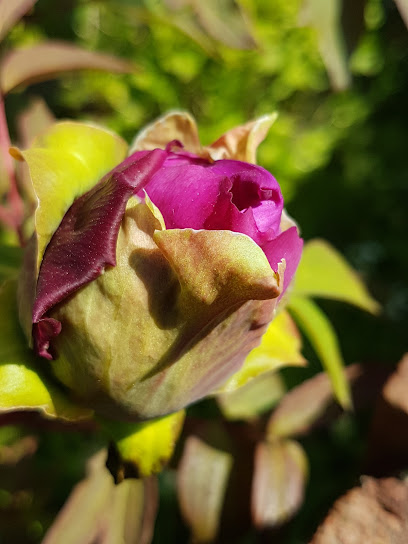
Cancer Research UK
Explore Cancer Research UK's thrift store in Guernsey, where every purchase aids vital cancer research while you uncover unique treasures.

Essential bars & hidden hideouts
The Rockmount - Randalls
Experience the perfect blend of coastal charm and culinary excellence at The Rockmount - Randalls, a must-visit gastropub in Guernsey.
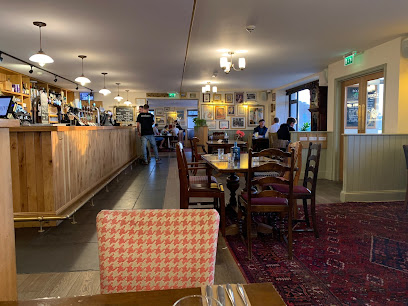
Thomas De La Rue
Discover the charm of Guernsey at Thomas De La Rue, where exceptional food, local brews, and vibrant entertainment come together in a welcoming atmosphere.
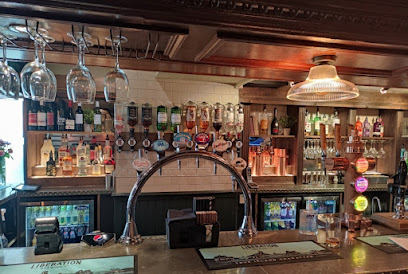
Ship & Crown
Experience the best of local and international cuisine at Ship & Crown, Guernsey's charming dining destination with stunning coastal views.
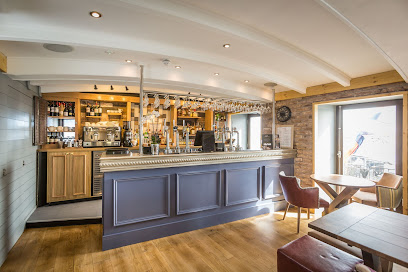
The Deerhound
Experience the warm hospitality and culinary delights of The Deerhound, a charming gastropub in Guernsey offering locally-sourced dishes and a vibrant atmosphere.

The Cock and Bull
Experience the lively atmosphere and local flavors at The Cock and Bull, a vibrant pub in St. Peter Port, Guernsey, known for great drinks and live music.
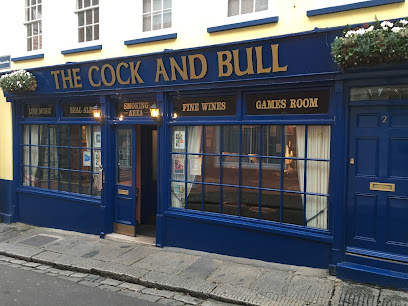
Fleur du Jardin
Experience the enchanting blend of hospitality and culinary delights at Fleur du Jardin, a top hotel, pub, and restaurant in Castel, Guernsey.

The Farmhouse
Discover The Farmhouse in Guernsey, where exquisite dining meets elegant event spaces in a charming setting.

The Doghouse
Discover the vibrant flavors of The Doghouse, Guernsey's premier gastropub offering delicious grilled dishes and live music in a lively atmosphere.
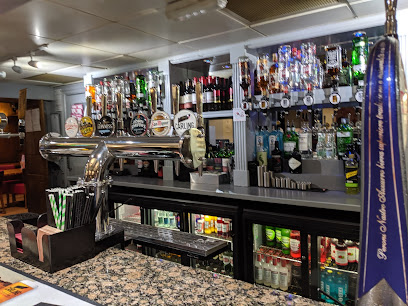
CORNERSTONE Social House
CORNERSTONE Social House in St Peter Port: A gastropub experience that combines quality food with an inviting atmosphere.
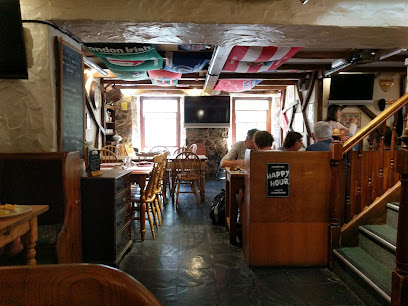
The Last Post - Mint Brasserie
Discover The Last Post - Mint Brasserie in St Andrews, Guernsey; a perfect blend of local cuisine and a vibrant bar atmosphere for every traveler.
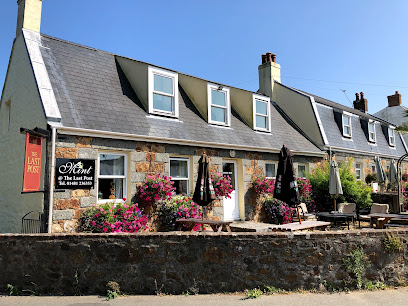
Albion House Tavern
Discover Albion House Tavern, a cozy pub in Guernsey offering local brews, friendly vibes, and a warm community atmosphere.
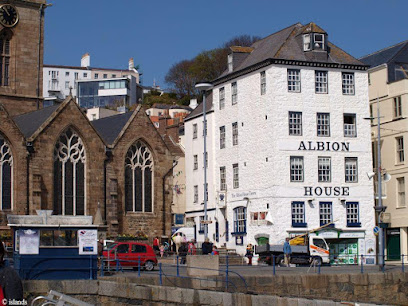
The Swan Inn
Discover the cozy charm of The Swan Inn in Guernsey, where great drinks and a welcoming atmosphere await every visitor.
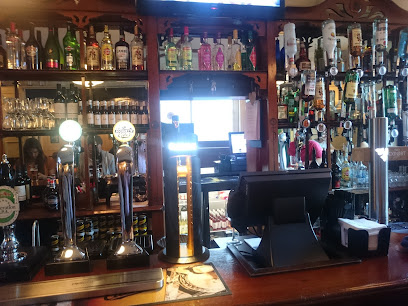
Dorset Arms
Discover the warmth of Guernsey at the Dorset Arms, where local brews and hearty meals create unforgettable memories.
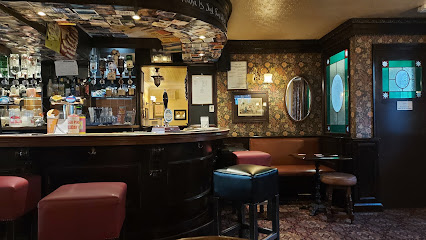
The Red Lion - Randalls
Experience the charm of Guernsey at The Red Lion, a cozy pub with local ales and delicious fare in a friendly atmosphere.

Happy Landings
Discover the charm of Happy Landings in Guernsey, where comfort meets a vibrant pub atmosphere in a picturesque setting.
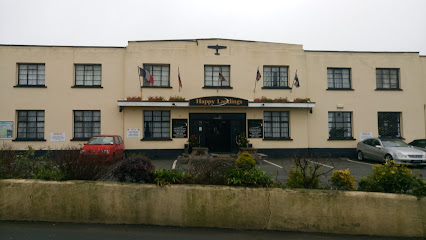
Local Phrases
-
- HelloBonjour
[bon-zhoor] - GoodbyeAu revoir
[oh reh-vwar] - YesOui
[wee] - NoNon
[nohn] - Please/You're welcomeS'il vous plaît
[seel voo pleh] - Thank youMerci
[mehr-see] - Excuse me/SorryExcusez-moi
[ehk-skew-zay mwah] - How are you?Comment ça va?
[koh-mohn sah vah] - Fine. And you?Bien. Et toi?
[byen. ay twah] - Do you speak English?Parlez-vous anglais?
[par-lay voo ahn-glay] - I don't understandJe ne comprends pas
[zhuh nuh kohm-prahn pah]
- HelloBonjour
-
- I'd like to see the menu, pleaseJe voudrais voir le menu, s'il vous plaît
[zhuh voo-dray vwar luh mahn-yoo, seel voo pleh] - I don't eat meatJe ne mange pas de viande
[zhuh nuh mahnj pah duh vyand] - Cheers!Santé!
[sahn-tay] - I would like to pay, pleaseJe voudrais payer, s'il vous plaît
[zhuh voo-dray pay-yay, seel voo pleh]
- I'd like to see the menu, pleaseJe voudrais voir le menu, s'il vous plaît
-
- Help!Au secours!
[oh seh-koo] - Go away!Allez-vous en!
[ah-lay voo zahn] - Call the Police!Appelez la police!
[ah-pay-lay lah poh-lees] - Call a doctor!Appelez un médecin!
[ah-pay-lay uh may-deh-sahn] - I'm lostJe suis perdu
[zhuh swee pair-doo] - I'm illJe suis malade
[zhuh swee mah-lahd]
- Help!Au secours!
-
- I'd like to buy...Je voudrais acheter...
[zhuh voo-dray ah-sheh-tay] - I'm just lookingJe regarde juste
[zhuh ruh-gard zhewst] - How much is it?Combien ça coûte?
[kohm-byen sah koot] - That's too expensiveC'est trop cher
[say troh shair] - Can you lower the price?Pouvez-vous baisser le prix?
[poo-vay voo beh-say luh pree]
- I'd like to buy...Je voudrais acheter...
-
- What time is it?Quelle heure est-il?
[kell ur ay-teel] - It's one o'clockIl est une heure
[eel ay oon ur] - Half past (10)Dix heures et demie
[dees ur ay duh-mee] - MorningMatin
[mah-tan] - AfternoonAprès-midi
[ah-pray mee-dee] - EveningSoir
[swah] - YesterdayHier
[ee-air] - TodayAujourd'hui
[oh-zhoor-dwee] - TomorrowDemain
[duh-man] - 1Un
[uhn] - 2Deux
[duh] - 3Trois
[twah] - 4Quatre
[kah-truh] - 5Cinq
[sank] - 6Six
[sees] - 7Sept
[sept] - 8Huit
[weet] - 9Neuf
[nurf] - 10Dix
[dees]
- What time is it?Quelle heure est-il?
-
- Where's a/the...?Où est le/la...?
[oo ay luh/lah] - What's the address?Quelle est l'adresse?
[kell ay lah-dress] - Can you show me (on the map)?Pouvez-vous me montrer (sur la carte)?
[poo-vay voo muh mohn-tray (soor lah kart)] - When's the next (bus)?Quand est le prochain (bus)?
[kohn ay luh proh-shan (bus)] - A ticket (to ....)Un billet (pour ....)
[uhn bee-yay (poor)]
- Where's a/the...?Où est le/la...?
History of St. Saviour
-
St. Saviour Parish in Guernsey was founded in the 12th century, its name derived from the dedication to Jesus Christ, the 'Saviour.' The parish church, St. Saviour's Church, was established around this time and has been a central part of the community ever since. Built on the site of an earlier chapel, the church has undergone various renovations and expansions over the centuries.
-
During the medieval period, St. Saviour was predominantly an agricultural parish. The fertile land and moderate climate made it ideal for farming. The landscape was dotted with small farms that produced a variety of crops including wheat, barley, and vegetables. Livestock farming was also a crucial part of the local economy, with cattle, sheep, and pigs being raised.
-
Guernsey's proximity to France has significantly influenced St. Saviour's culture and history. During the Hundred Years' War (1337-1453), the island was frequently caught between English and French control. This period saw the construction of defensive structures and the reinforcement of the parish church as a sanctuary for the locals.
-
The 16th century Reformation brought significant religious and social changes to St. Saviour. The island, including St. Saviour Parish, transitioned from Catholicism to Protestantism under the influence of the English Crown. The parish church, which had been a Roman Catholic institution, became a Protestant place of worship. This change was marked by the removal of Catholic iconography and the introduction of English services.
-
During the Napoleonic Wars (1803-1815), Guernsey, including St. Saviour, became strategically important due to its location. The British fortified the island to protect against potential French invasion. Martello towers and other defensive structures were erected to bolster the island's defenses. These fortifications, some of which still stand today, are a testament to the island's military significance during this period.
-
One of the most significant events in St. Saviour's history was the German occupation during World War II (1940-1945). Guernsey was occupied by German forces, and St. Saviour, like the rest of the island, saw the construction of bunkers, anti-tank walls, and other military installations. The occupation period had a profound impact on the local population, with many enduring hardships and forced labor.
-
Following the liberation in 1945, St. Saviour, along with the rest of Guernsey, underwent a period of recovery and rebuilding. The post-war era saw the modernization of infrastructure and the revitalization of the local economy. Today, St. Saviour is a vibrant parish that blends its rich historical heritage with modern amenities, attracting visitors from around the world.
St. Saviour Essentials
-
St. Saviour is located in the western part of Guernsey, one of the Channel Islands. The nearest airport is Guernsey Airport (GCI), which has regular flights from the UK and other European destinations. From the airport, you can take a taxi or a local bus to St. Saviour. Alternatively, you can reach Guernsey by ferry from the UK or France, arriving at St. Peter Port, the island's main harbor. From there, it's a short drive or bus ride to St. Saviour.
-
Public transportation in St. Saviour is efficient and reliable, with buses running frequently to various parts of the island. Renting a car or a bicycle is also a popular option for exploring the area at your own pace. Taxis are available but can be expensive, so it's advisable to book in advance. Walking is another great way to explore St. Saviour, as it is a relatively small area with well-marked trails and paths.
-
The official currency in Guernsey is the Guernsey Pound (GGP), which is on par with the British Pound (GBP). Both currencies are accepted interchangeably on the island. Credit and debit cards are widely accepted in hotels, restaurants, and shops. ATMs are available throughout St. Saviour, but it is advisable to carry some cash for smaller establishments and for use in rural areas.
-
St. Saviour is generally very safe for tourists. However, it's always wise to take standard precautions such as not leaving your belongings unattended and avoiding poorly lit areas at night. Petty crime is rare, but it can happen, so stay vigilant. There are no specific high-crime areas targeting tourists, but it's always best to remain aware of your surroundings.
-
In case of emergency, dial 999 or 112 for immediate assistance. The local police and medical services are efficient and well-equipped. There is a medical center in St. Saviour and a hospital in St. Peter Port. It's advisable to have travel insurance that covers medical emergencies. Pharmacies are available for minor health issues, and many medicines are available over the counter.
-
Fashion: Do dress smart-casual, especially when dining out. Avoid overly revealing clothing. Religion: Do respect local customs. Churches are open to visitors, but always behave respectfully and dress modestly. Public Transport: Do have the exact fare for buses as drivers may not provide change. Don't eat or drink on public transport. Greetings: Do greet locals with a friendly 'hello' or a handshake. Eating & Drinking: Do try local dishes such as Guernsey Gâche and Bean Jar. Don't refuse a meal invitation from locals, as it may be considered impolite.
-
To experience St. Saviour like a local, visit the local markets and farm shops for fresh produce and homemade goods. Engage with the locals, who are known for their friendliness and willingness to share stories about the area. Don't miss the chance to explore the beautiful countryside and coastal paths. For a unique experience, visit the Little Chapel, one of Guernsey’s most famous landmarks, which is located nearby.
Trending Landmark in St. Saviour
-
Castle Cornet
-
The Little Chapel
-
Saumarez Park
-
German Occupation Museum
-
Sausmarez Manor
-
German Underground Hospital
-
The Farmhouse
-
Grandes Rocques Beach
-
Fort Grey Shipwreck Museum
-
Driftwood Inn
-
Fort Hommet
-
National Trust of Guernsey - Folk and Costume Museum
-
Vale Castle
-
Fauxquets Valley Campsite
-
Moulin Huet Bay
Nearby Cities to St. Saviour
-
Things To Do in Castel
-
Things To Do in Forest
-
Things To Do in St. Andrew
-
Things To Do in St. Martin
-
Things To Do in Vale
-
Things To Do in St. Peter Port
-
Things To Do in St. Sampson
-
Things To Do in St. Anne
-
Things To Do in St. Ouen
-
Things To Do in St. Peter
-
Things To Do in St. Brelade
-
Things To Do in St. Lawrence
-
Things To Do in St. Aubin
-
Things To Do in Trinity
-
Things To Do in St. Helier







